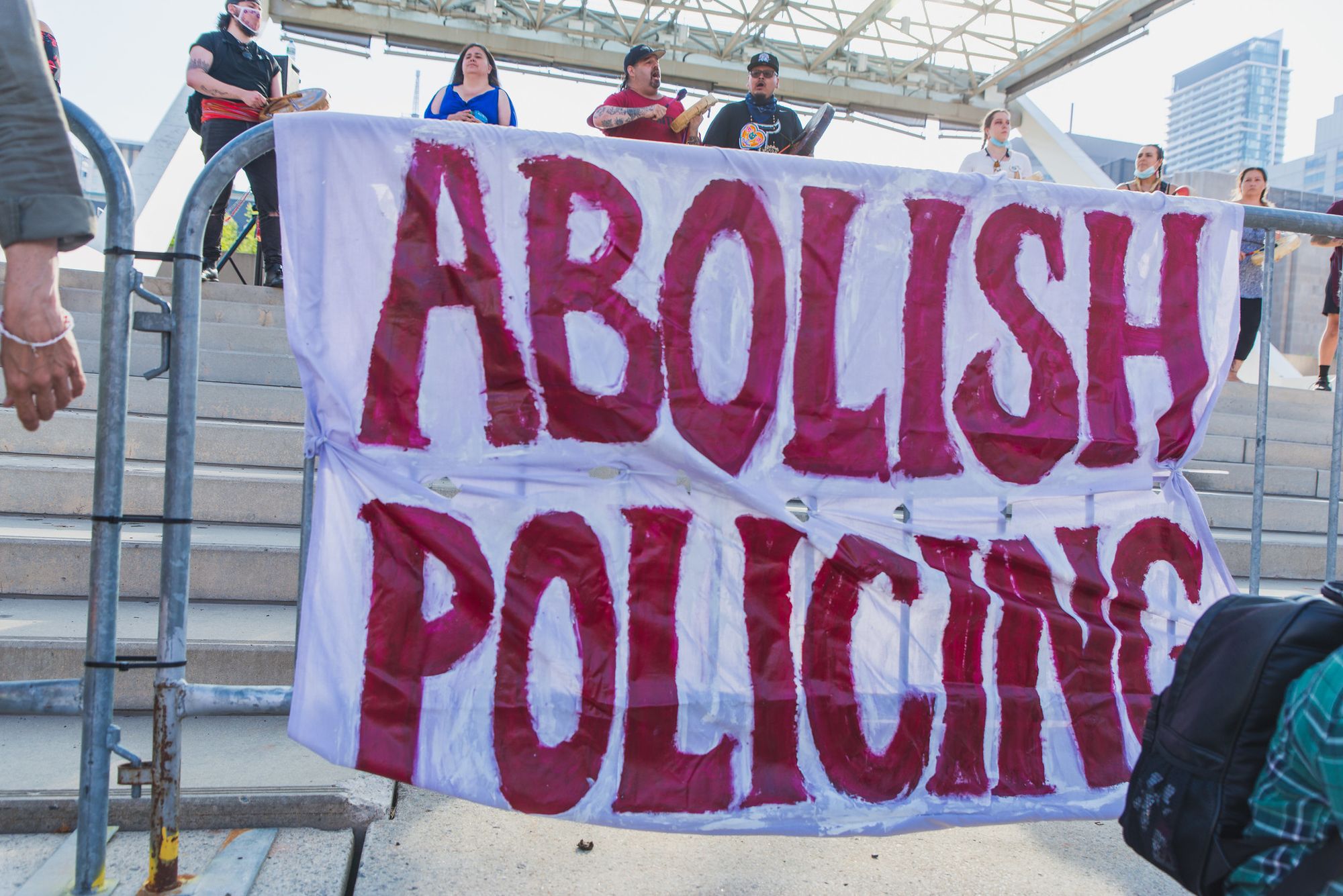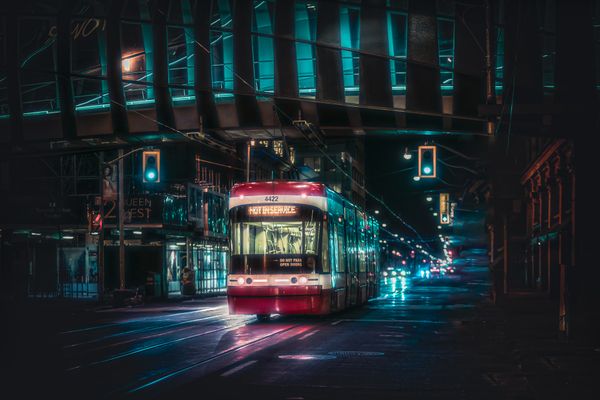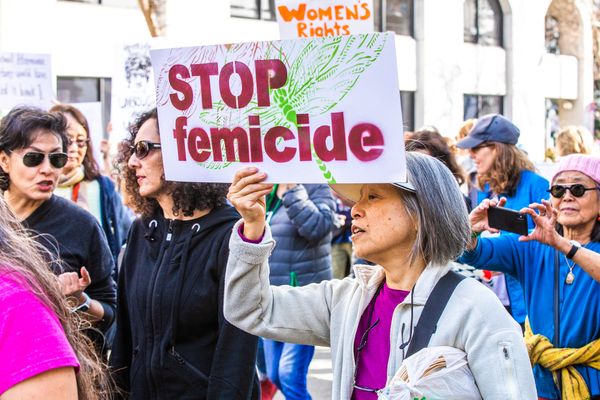Popular police abolition models typically ascribe to the divest–invest framework: reconfigure government budgets to reduce police budgets and increase community funding.
These models posit that funding communities can eliminate what they identify as the root causes of crime — poverty and lack of opportunities — and consequently wipe out most crime and the overwhelming need for prisons.
This is a constructive vision that shouldn’t be diminished. When people have quality education, well-lit streets and access to healthcare, their communities begin to heal and crime rates go down.
But when discussing the root causes of crime, many of these models have overlooked the most damning one: racism. Activists certainly discuss the detrimental effects policing has on Black, Indigenous and racialized people, but that’s the issue: Many models focus on responding to racism as a by-product of crime rather than a cause.
By underestimating racism’s role as a root cause of crime, popular models risk oversimplifying racist capitalism and thus failing to ever achieve true abolition.
Crime Is Rooted In Racism
Racism is a root cause of crime because it’s central to our creation and enforcement of laws. People in power decide what is and isn’t a crime by drafting laws, and laws are created with the goal of upholding capitalism and white supremacy. So, policing isn’t just racist in its execution — targeting and arresting racialized people at higher rates — but also in its inherent purpose.
As Alex S. Vitale, the author of The End of Policing, explains, policing developed in the 18th century in direct relation to colonialism, slavery and industrialization, so as to make those regimes possible. The institution of policing functioned as the strong arm of government, creating and enforcing laws to allow the accumulation of wealth, and exploitation of labour, inherent to these regimes.
For example, police forces in the United States evolved out of “slave patrols,” and the RCMP in Canada was created to assert sovereignty over Indigenous individuals, communities and lands. Indeed, Canada criminalized the Potlach in part to force Indigenous communities to participate in its colonial economy.
Policing’s function of furthering colonialism and capitalism hasn’t changed. Laws, especially those regarding poverty-driven acts, are drafted to oppress BIPOC (Black, Indigenous and people of Colour), which is why loitering is criminalized, and fines and cash bail are used as punishment.
Surveillance is focused on BIPOC, which is why police patrol certain neighbourhoods to a greater degree and disproportionately stop Black people in supposedly random street checks.
Police violence is disproportionately perpetrated against BIPOC, which is why Indigenous people made up more than 60 per cent of those killed by police in Winnipeg between 2000 and 2017, despite making up just 10.6 per cent of the population.
Penalties are applied differently to BIPOC, which is why: Black people in Toronto are arrested for drug-related offences at much higher rates than white people; Black motorists are more likely than whites to be ticketed for violations that arose only after the initial stop took place (known as “driving while black”); Indigenous people are more likely to be criminalized and imprisoned for acts linked to poverty, substance use, and mental health concerns. It’s no surprise criminologists often call Canada’s prisons the “new residential schools.”
Racist capitalism continues to guide our carceral state, by intentionally depriving some groups for the benefit of other groups.
What We Lose When We Overlook Racism As A Root Cause Of Crime
Creating healthier communities will reduce crime, but regardless of how many public housing units are built, or math classes are offered, racialized communities will remain trapped under the carceral state as long as they’re targeted by legislation and law enforcement.
As we fight our way to complete abolition, cops will still over-police and disproportionately kill Black people, and prisons will still be filled with Indigenous people. Underestimating racism as a root cause of crime will harm the progress the abolitionist movement can make, by keeping these barriers erect.
Popular abolition models need to account for the racist foundations of our carceral systems when imagining police- and prison-free futures, otherwise the government will simply be throwing money at a problem without creating a sustainable solution. If racism as a root cause of crime isn’t addressed, it won’t matter how much funding is given to racialized communities.
Moreover, to envision well-funded communities as abolition’s end goal is to suggest that affluent people don’t commit crime because they’re well-fed and educated, and therefore make good decisions.
Although affluent white people don’t commit crimes driven by poverty, they still commit crimes. Affluent white people also don’t stay out of jail just because they live in healthy communities, but also because police aren’t on a mission to lock them up. As sociologist Tamara K. Nopper wrote in The New Inquiry, these communities have low crime rates in part because our system allows affluent white people to evade responsibility.
Even when white people are charged, they aren’t held accountable to any standard that would appease an abolitionist. White people get warnings from cops, they pay bail and go about their lives, and they get slaps on the wrist from judges. The harm caused by white people is often swept under the rug, and society continues as if nothing has happened.
For example, in 2017, two young white men convicted of assault had sentencing judges bend over backwards to give intermittent and suspended sentences so as not to interfere with their “glowing future” of law schools and internships.
Abolition strives to create public accountability through non-carceral means. It’s about dealing with societal issues head on in a caring and community-centred way. As Nopper writes, “Abolition is not just the absence of policing or captivity; it is also about creating different models of accountability and harm reduction.”
If popular abolition models fail to include racism as a cause of crime, the legal system will continue to target and imprison racialized people for existing, and wealth and whiteness will be used to provide affluent communities the means to continue avoiding public accountability.
Abolition shouldn’t be about simply looking for more textbooks and footballs. We need to incorporate racist capitalism analyses into our conversations of the construction of crime, the creation of police, the bigotry of the courts and the business of prisons.
If we ever want to realize true abolition in our lifetime, we must communicate that resources are only half the picture. The other half is racism.







Member discussion